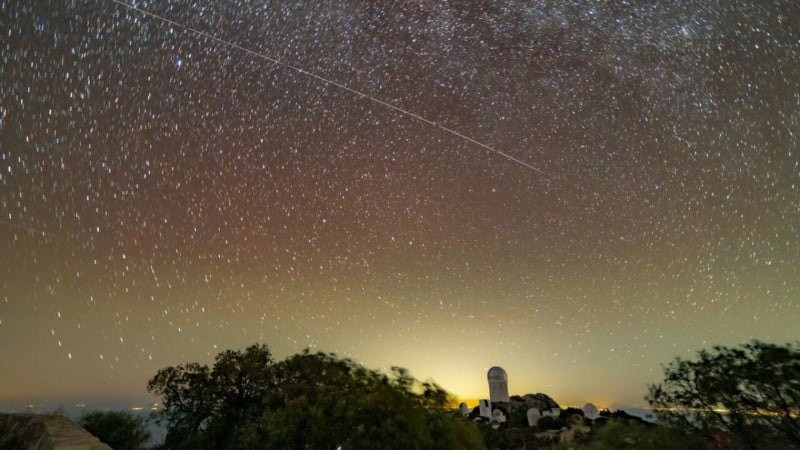Huge Satellite Threatens to Obscure Photographers’ View of the Night Sky

Astronomers have raised concerns over a new satellite that is now one of the brightest objects in the night sky that could also hinder astrophotographers.
The BlueWalker 3 satellite from Texas-based AST SpaceMobile fully deployed its huge 693-foot communication array a couple of weeks ago. It is the largest antenna of any commercial communications satellite.
As more and more satellites are sent into Earth’s orbit they begin to obscure the night sky.
‘Dismayed at the Streaks on my Camera’s Sensor’
It’s been widely reported that SpaceX’s Starlink satellites have been photobombing astronomy pictures, causing satellite streaks to appear in images.
And astrophotographer Joshua Defibaugh tells PetaPixel that he is concerned about BlueWalker 3.
“The night sky is perhaps the last vestige of beauty in our changing world. The earth is warming at considerable rates, but it’s also getting brighter each year, between two and six percent each year by some estimates,” he says.
“Each time I venture out in a national park or dark sky site to photograph the Milky Way, I’m always dismayed at the streaks that cross my camera’s sensor. Planes and satellites fill the sky and there’s always an orange haze glowing in the distance.”
In January, the American Astronomical Society reported that “the number of affected images is increasing with time as SpaceX deploys more satellites.”
Data on the problem is still hard to come by, but it’s expected to get worse with more and more satellites being launched every year.
Warning
The International Astronomical Union (IAU) has now warned of the danger posed by the intense brightness emanating from the BlueWalker 3.
“[It] is a big shift in the constellation satellite issue and should give us all reason to pause,” says Piero Benvenuti, an astrophysicist at the University of Padova in Italy and an IAU representative.

The IAU has outlined two main reasons why humans should worry about ultra-bright satellites.
The first is simply: “humanity’s ability to experience the natural night sky.”
The second is that astronomers are concerned that satellites are encroaching on their ability to carry out scientific studies.
“Astronomers build radio telescopes as far away as possible from human activity, looking for places on the planet where there is limited or no cell phone coverage,” explains SKAO Director-General Philip Diamon.
“Frequencies allocated to cell phones are already challenging to observe even in radio-quiet zones we have created for our facilities. New satellites such as BlueWalker 3 have the potential to worsen this situation and compromise our ability to do science if not properly mitigated.”
A spokesperson for AST SpaceMobile responded to the IAU’s statement by pointing out that their mission is an attempt to “solve the major global problem of lack of connectivity, which affects billion of people around the world.”
“We are building the first and only space-based cellular broadband network — one that is designed to provide coverage to areas currently beyond the reach of today’s networks.
“Our planned network aims to connect devices around the world and support a universal good. Cellular broadband for more people globally would help ease poverty, support economic development, build a more equitable and diverse digital society, and save lives.”